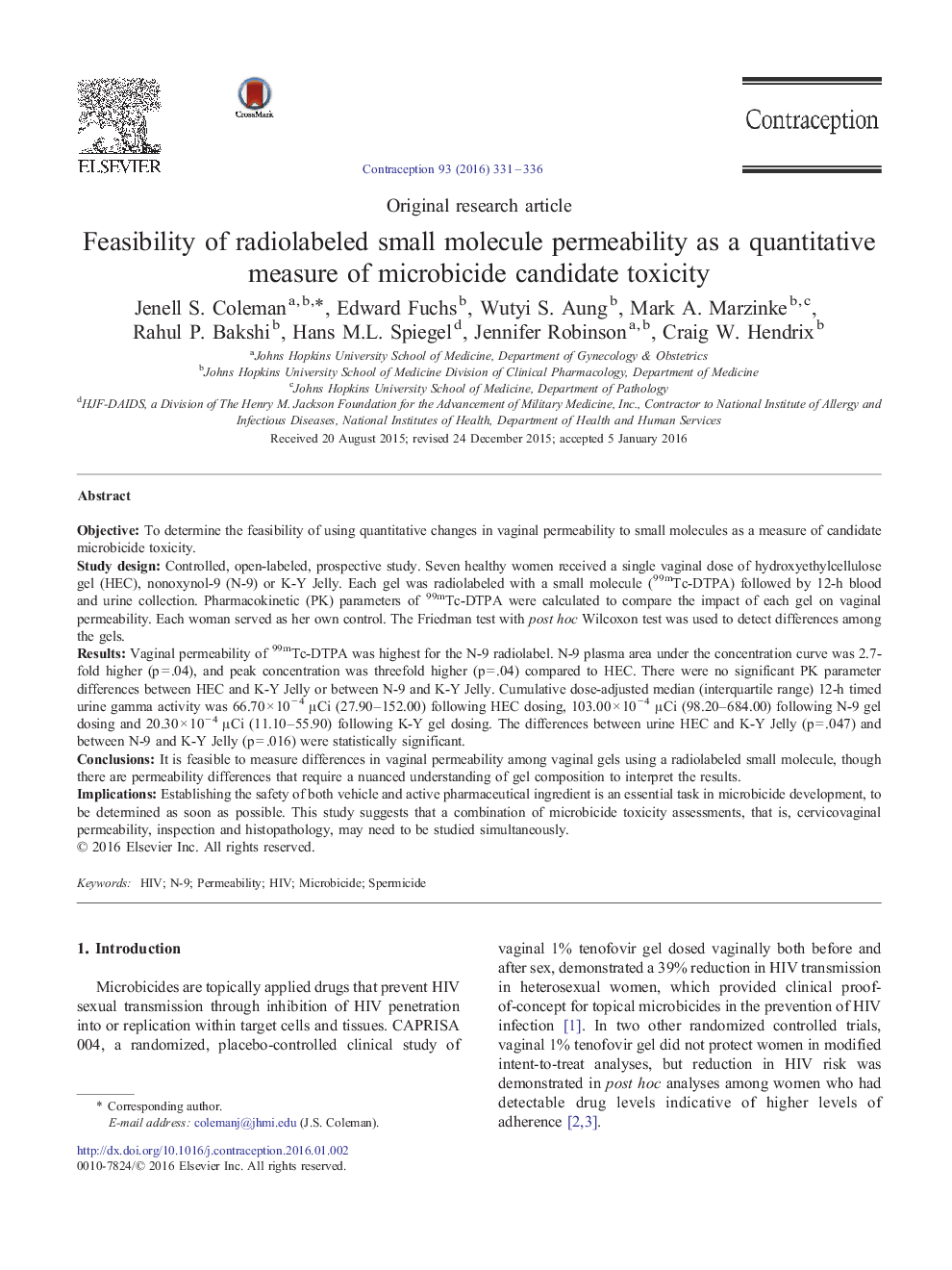| کد مقاله | کد نشریه | سال انتشار | مقاله انگلیسی | نسخه تمام متن |
|---|---|---|---|---|
| 6170752 | 1251415 | 2016 | 6 صفحه PDF | دانلود رایگان |
ObjectiveTo determine the feasibility of using quantitative changes in vaginal permeability to small molecules as a measure of candidate microbicide toxicity.Study designControlled, open-labeled, prospective study. Seven healthy women received a single vaginal dose of hydroxyethylcellulose gel (HEC), nonoxynol-9 (N-9) or K-Y Jelly. Each gel was radiolabeled with a small molecule (99mTc-DTPA) followed by 12-h blood and urine collection. Pharmacokinetic (PK) parameters of 99mTc-DTPA were calculated to compare the impact of each gel on vaginal permeability. Each woman served as her own control. The Friedman test with post hoc Wilcoxon test was used to detect differences among the gels.ResultsVaginal permeability of 99mTc-DTPA was highest for the N-9 radiolabel. N-9 plasma area under the concentration curve was 2.7-fold higher (p = .04), and peak concentration was threefold higher (p = .04) compared to HEC. There were no significant PK parameter differences between HEC and K-Y Jelly or between N-9 and K-Y Jelly. Cumulative dose-adjusted median (interquartile range) 12-h timed urine gamma activity was 66.70 Ã 10â 4 μCi (27.90-152.00) following HEC dosing, 103.00 Ã 10â 4 μCi (98.20-684.00) following N-9 gel dosing and 20.30 Ã 10â 4 μCi (11.10-55.90) following K-Y gel dosing. The differences between urine HEC and K-Y Jelly (p = .047) and between N-9 and K-Y Jelly (p = .016) were statistically significant.ConclusionsIt is feasible to measure differences in vaginal permeability among vaginal gels using a radiolabeled small molecule, though there are permeability differences that require a nuanced understanding of gel composition to interpret the results.ImplicationsEstablishing the safety of both vehicle and active pharmaceutical ingredient is an essential task in microbicide development, to be determined as soon as possible. This study suggests that a combination of microbicide toxicity assessments, that is, cervicovaginal permeability, inspection and histopathology, may need to be studied simultaneously.
Journal: Contraception - Volume 93, Issue 4, April 2016, Pages 331-336
